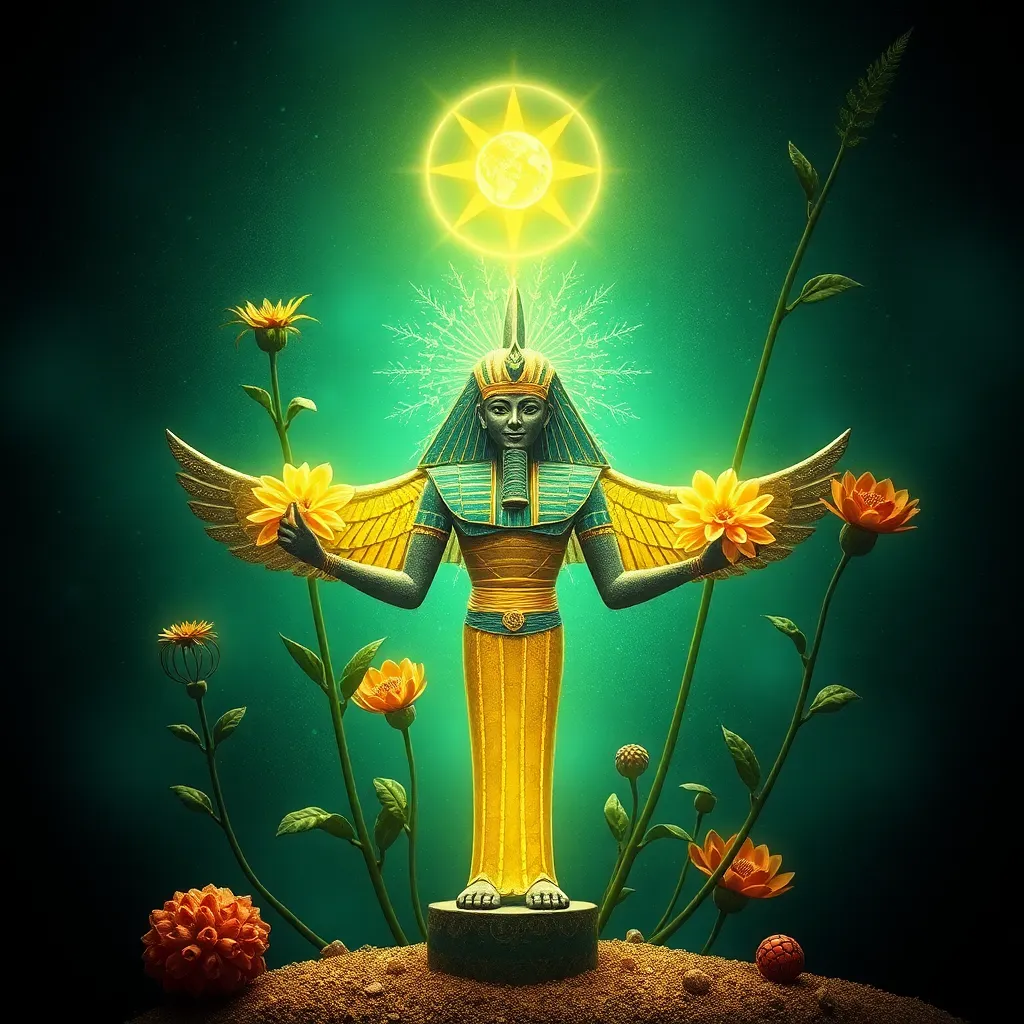The Use of Sacred Plants in Ancient Egyptian Medicine
I. Introduction
The medicine of ancient Egypt is a fascinating aspect of its civilization, combining practical healing with rich spiritual beliefs. Ancient Egyptians viewed health not just as a physical state but as a harmony of body, mind, and spirit. A critical component of their healing practices was the use of sacred plants, which held both medicinal properties and spiritual significance.
This article explores the historical context of ancient Egyptian medicine, the key sacred plants utilized, and the integral roles priests and healers played in the practice. It aims to uncover the deep interconnection between spirituality and healing in ancient Egyptian society.
II. Historical Context of Ancient Egyptian Medicine
Medical practices in ancient Egypt evolved over thousands of years, influenced by cultural exchanges, advancements in knowledge, and a profound connection to the divine. The Egyptians developed a systematic approach to medicine that combined empirical observation with spiritual beliefs.
Religion and spirituality were central to healing practices. Many ailments were thought to be caused by supernatural forces, necessitating a dual approach that included both physical treatments and spiritual rituals. Herbal knowledge was meticulously documented in medical texts, reflecting a sophisticated understanding of botany and pharmacology.
III. Key Sacred Plants in Ancient Egyptian Medicine
Several plants were regarded as sacred and were integral to medical practices in ancient Egypt. Below are some of the most significant:
A. Papyrus (Cyperus papyrus)
Papyrus was not only vital for writing but also had medicinal uses. It was used to create dressings for wounds and was believed to have anti-inflammatory properties.
Symbolically, papyrus represented life and resurrection, often associated with the deity Osiris. Its use in both practical and spiritual contexts underscores its importance in ancient Egyptian culture.
B. Lotus (Nymphaea caerulea)
The blue lotus is renowned for its psychoactive properties and was utilized in various medicinal applications, including pain relief and as a sedative. Additionally, it was used in rituals to enhance spiritual experiences.
Culturally, the lotus symbolized creation and rebirth and was frequently depicted in art and architecture, emphasizing its significance in both daily life and the afterlife.
C. Frankincense and Myrrh
These aromatic resins were highly valued for their healing properties and were commonly used in rituals and incense. They were believed to purify the soul and protect against illness.
The trade of frankincense and myrrh contributed significantly to Egypt’s economy, highlighting their importance not only in medicine but also in commerce and cultural exchanges with other civilizations.
IV. The Role of Priests and Healers
Priests in ancient Egypt often served dual roles as spiritual leaders and healers. Their training encompassed knowledge of herbal remedies, rituals, and the spiritual aspects of health.
Rituals involving sacred plants were common, as they believed these plants could facilitate communication with the gods and promote healing. This intersection of religion and medicine was fundamental to their approach to wellness.
V. Medical Texts and Botanical Knowledge
Key medical papyri, such as the Ebers Papyrus and the Edwin Smith Papyrus, provide invaluable insights into the medical practices of ancient Egypt. These texts documented a variety of plant-based remedies, showcasing the extensive herbal knowledge of the time.
Such documentation influenced later medicinal practices, demonstrating the enduring legacy of ancient Egyptian herbal medicine in subsequent cultures, including the Greco-Roman period.
VI. The Spiritual Significance of Sacred Plants
In ancient Egypt, the connection between health and spirituality was profound. Sacred plants were often used in rituals and offerings, believed to invoke divine favor and promote healing.
Moreover, the Egyptians believed that certain plants could aid in the afterlife, with specific herbs and flowers placed with the deceased to ensure a safe passage and a harmonious existence beyond death.
VII. Legacy of Ancient Egyptian Herbal Medicine
The influence of ancient Egyptian herbal medicine is evident in various subsequent medical traditions, including Greco-Roman and traditional herbal medicine practices. The sacred plants used by the Egyptians continue to be relevant in modern herbalism.
Archaeological findings have preserved much of this ancient knowledge, allowing contemporary scholars and herbalists to explore and respect these traditional practices.
VIII. Conclusion
The significance of sacred plants in ancient Egyptian medicine reveals a rich tapestry of healing intertwined with spirituality. These plants were not only essential for treating ailments but also played a crucial role in the cultural and religious life of the Egyptians.
Reflecting on the integration of spirituality and healing in ancient practices invites us to appreciate the wisdom of those who came before us. As we continue to explore the medicinal uses of plants, we can honor and learn from the ancient Egyptians’ profound connection to nature and the divine.




